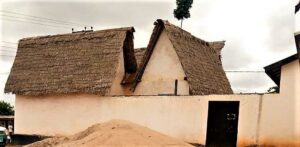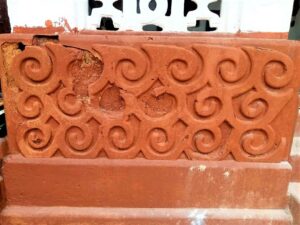UNESCO advocates protection of ATBs listed as World Heritage site

The United Nations Educational, Scientific and Cultural Organization (UNESCO) has encouraged Ghana to develop and submit a proposal for international assistance to create a conservation and management plan for the Asante Traditional Buildings (ATBs).
Currently, the Buildings, listed as one of the World Heritage sites, have become vulnerable to climatic conditions and their preservation poses a challenge, according to the Organization.
“There is the need to develop a comprehensive, holistic and inclusive management and conservation plan for the Asante Traditional Buildings,” Mr Abdourahamane Diallo, Representative of UNESCO to Ghana, noted.
The UN Representative, who was addressing the opening session of a ‘Sankofa’ Heritage Workshop, dubbed ‘Integrated Management of a Heritage site’, at Ejisu in the Ashanti Region, said there must be a concerted effort to safeguard and promote one of the country’s invaluable cultural and natural heritage properties.
Located at the north-east of Kumasi, the ATBs represent some of the last material remains of the great Asante civilization, which reached its high point in the 18th Century.
The dwellings were inscribed on the World Heritage List in 1980, citing their unique architectural style of the Asante Kingdom and the traditional motifs of the rich bas-relief decoration which are filled with symbolic meanings.
The rich colour, skill and diversity of the ATBs’ decorations represent some of the last surviving examples of significant architecture, reflecting the intricate technical, religious and spiritual heritage of the people.
“We have a responsibility to promote the buildings’ importance to our lives, identities and communities, as well as future generations,” Mr Diallo stated.
The ATBs, arranged around courtyards, is constructed mainly of earth, timber, bamboo, straw and mud plaster, and originally had thatched roofs.
Mr John Ampontuah Kumah, Member of Parliament (MP) for Ejisu, said the traditional buildings ought to be protected to promote tourism and the cultural heritage of the people.
Mr Alexandre Foulon, Head of Cooperation at the French Embassy, said the French Government was inspired to be

associated with the ‘Sankofa’ Project in order to contribute significantly to preserving Ghana’s cultural heritage, which was the base of the country’s tourism and tourism potential.
Nana Akwasi Agyekum II, Mawerehene of Ejisu, said the traditional authorities were determined to safeguard the ATBs for the sake of posterity.
Mr Ivor Agyemang-Duah, acting Executive-Director of the Ghana Museums and Monuments Board (GMMB), in an interview with the Ghana News Agency (GNA), on the sidelines of the workshop, said the programme was to create a management guideline to be used by local communities and the Board for one of Ghana’s two World Heritage sites.
It was held in line with the ‘Sankofa’ Project funded by the Embassy of France with UNESCO support, he said.
As part of the activities, the GMMB, organizers of the programme, facilitated a field trip to some of the building sites located within the Ejisu Municipality, including Besease, Edwenase, Adako-Jachie and Asawase.
This was to enable a concrete study case, and also make an assessment of the actions already undertaken to be preserving the sites.
Some of the objectives of the training session also sought to reflect on how the communities could take ownership of the heritage sites from their perceived and potential value and history, using comparative approaches.
Additionally, it aimed at illustrating long-term management of the traditional buildings, including training and resource-generating activities, as well as a rapid response scheme in case of emergency.
Topics treated included ‘Universal Outstanding Value and Local Traditional Values of the ATBs’, ‘Heritage values and Community Attachment: a Necessary Dialogue’, ‘The ATBs Traditional and Utility Values from the Local Communities’ Perspectives’ and ‘UNESCO Management Plan for Ashanti Traditional Buildings’.
Others were ‘How to Involve Communities and Transmit Knowledge’, ‘Community Heritage Management and the Politics of Heritage Management in Ghana’.
According to UNESCO, there are currently 1, 121 sites on the World Heritage List, of which 869 are cultural, 213 are natural and 39 are mixed.
Fifty-three (53) of the sites are on the Danger List, including the historic centre of Vienna and the Old City (and walls) of Jerusalem.
Source: GNA
